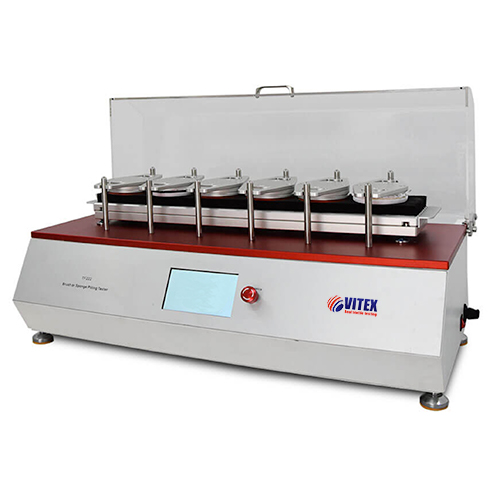Application
Brush or Sponge Pilling Tester, to determine the pilling propensity and simulate normal wear of
knitted and woven fabrics used in apparel and automotive interiors by brush and/or sponging
specimens together in a circular motion to form pills. Specimens are evaluated under standard
lighting conditions using a pilling assessment viewer, light cabinet or similar, against users’
standard fabrics or pilling photographs.
A set of 8 standard (made in USA) brush is included.
Optional order
- Kit for GM9652P adds 6 square sample holders and automatic cycle controller
- Kit for FORD BN-108-03 adds 6 square sample holders and special sponge board
- Kit for FORD BN12-4 including adapter board, 3 square specimen holder
Standards
ASTM D3511, FORD BN12-4/108-03, GM 9652P
Power
220 /110 V 50/60 Hz
Weight
95 Kg
Dimensions
920 x 400 x 320mm (L x W x H)



